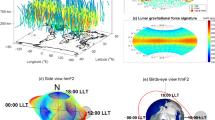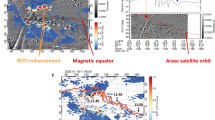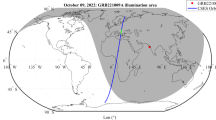Abstract
IT has been definitely established that the ionosphere responsible for carrying radio waves round the curved surface of the earth is divided into two clearly distinguishable regions1,2. The lower—the classical Kennelly-Heaviside or the E layer—is situated at a height of about 90 km., and the upper —the Appleton or the F layer—is situated at a height of about 200 km. The nature of the ionising agencies producing these two different layers is, however, not yet definitely known.
This is a preview of subscription content, access via your institution
Access options
Subscribe to this journal
Receive 51 print issues and online access
$199.00 per year
only $3.90 per issue
Buy this article
- Purchase on Springer Link
- Instant access to full article PDF
Prices may be subject to local taxes which are calculated during checkout
Similar content being viewed by others
References
Appleton, NATURE, 120, 330, Sept. 3, 1927.
Mitra and Rakshit, Phil. Mag., 15, 20 1933.
Chapman, Proc. Roy. Soc., A, 132, 353 1931.
Chapman, Mon. Not. Roy. Ast. Soc., 92, 413 1932.
Wireless World, 31, 273 1932.
Appleton, NATURE, 127, 197, Feb. 7, 1931.
Author information
Authors and Affiliations
Rights and permissions
About this article
Cite this article
MITRA, S., RAKSHIT, H., SYAM, P. et al. Effect of the Solar Eclipse on the Ionosphere. Nature 132, 442–443 (1933). https://doi.org/10.1038/132442a0
Issue Date:
DOI: https://doi.org/10.1038/132442a0
This article is cited by
-
Ionospheric Studies in India
Nature (1936)
Comments
By submitting a comment you agree to abide by our Terms and Community Guidelines. If you find something abusive or that does not comply with our terms or guidelines please flag it as inappropriate.



